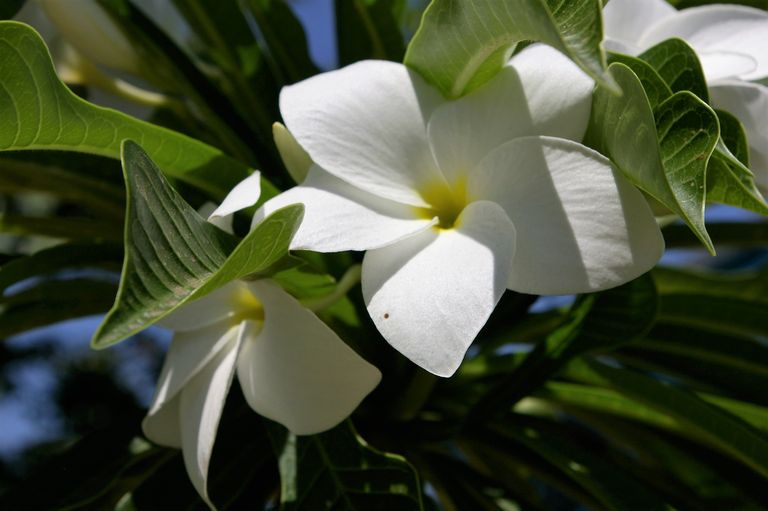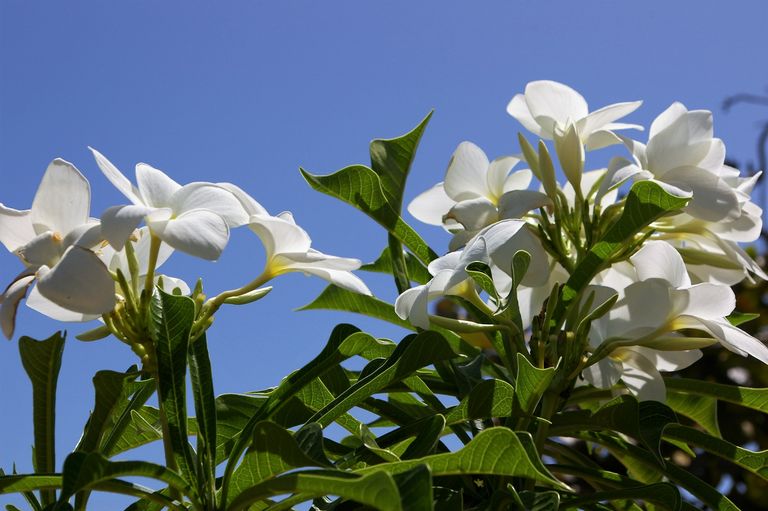Saludos queridos amantes de la fotografía
Greetings dear photography lovers
Hoy les traigo una flor que forma parte esencial del patrimonio vegetal venezolano, sobre todo en las zonas urbanas, donde se desarrolla en todo su esplendor. Sus flores blancas, amarillas o rosas, dependiendo de su forma de cultivo, tienen un perfume intenso, agradable y dulce, parecido a la vainilla o la almendra. En este caso, me refiero a la Atapaima, también conocida por Amapola, Amapola Blanca, o Mapola, su nombre científico es Plumiera alba, este es un pequeño género de plantas que comprende 133 especies descritas y de estas, solo 11 han sido aceptadas.
Today I bring you a flower that is an essential part of the Venezuelan plant heritage, especially in urban areas, where it develops in all its splendor. Its white, yellow or pink flowers depending on their cultivation form, have an intense, pleasant and sweet perfume, similar to vanilla or almond. In this case, I refer to the Atapaima, also known as Poppy, White Poppy, or Mapola, its scientific name is Plumiera alba, this is a small genus of plants that includes 133 described species and of these, only 11 have been accepted.


Esta planta ornamental, arbustiva, es nativa de México, Centroamérica, y Venezuela, se distribuye en las zonas xerófitas y urbanas de América Tropical, incluyendo las Antillas. Pertenece a la familia botánica de las Apocynaceae, y también forma parte del grupo de las laticífera porque secreta leche, de la que se debe tener cuidado, ya que es corrosiva. Crece de 3 a máximo 6 metros, tiene un tronco carnoso con cicatrices foliares, sus hojas están agrupadas, son lanceoladas de 30 centímetros de largo hasta casi 6 centímetros de ancho las más grandes. Prefiere suelos arenosos con mucha permeabilidad.
This ornamental, shrubby plant is native to Mexico, Centroamérica, and Venezuela, and is distributed in the xerophilous and urban areas of Tropical America, including the Antilles. It belongs to the botanical family of Apocynaceae, and is also part of the laticifera group because it secretes milk, which must be taken care of, since it is corrosive. It grows from 3 to maximum 6 meters, has a fleshy trunk with leaf scars, its leaves are grouped, are lanceolate from 30 centimeters long to almost 6 centimeters wide the largest. Prefers sandy soils with high permeability.



Es la Flor Nacional de Nicaragua desde 1971, allí se le conoce con el nombre indígena de Sacuanjoche. En la península de Yucatán, los mayas denominan al árbol Sak Nikté o Nikté y en Francia se conoce como la "Flor de Marzapan".
It is the National Flower of Nicaragua since 1971, there it is known by the indigenous name of Sacuanjoche. In the Yucatan Peninsula, the Mayas call the tree Sak Nikté or Nikté and in France it is known as the "Marzapan Flower".

Referencias
http://hemisferiosurguayana.blogspot.com/2015/06/atapaimo-o-amapola-flor-perenne-de.html

Contenido y fotografías de mi propiedad intelectual
Información Técnica
| Cámara | Pentax * istDL |
|---|---|
| Lente | * Pentax 18-55 |
| Iluminación | Luz Natural |
| Locación | Barcelona, Estado Anzoátegui, Venezuela |
Content and photographs of my intellectual property
Technical information
| Camera | Pentax * istDL |
|---|---|
| Lens | * Pentax 18-55 |
| Lighting | Natural Light |
| Location | Barcelona, Anzoátegui State, Venezuela |



Congratulations, your post has been curated by @r2cornell-curate. You can use the tag #R2cornell. Also, find us on Discord
Felicitaciones, su publicación ha sido votada por @ r2cornell-curate. Puedes usar el tag #R2cornell. También, nos puedes encontrar en Discord
La conozco como bouquet de novia, por el hermoso ramillete blanco que forman sus flores, es muy hermosa en verdad @francyrios75